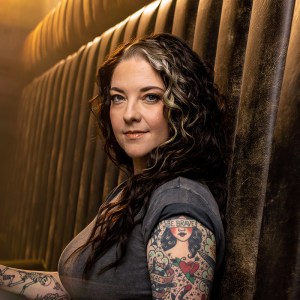Earlier this month, American Songwriter broke down the team of writers that came together to craft “California Love,” Tupac’s 1995 single with Dr. Dre that turned out to be one of the most successful hits in his career. However, many in the hip-hop community sometimes tend to overlook Pac’s eventual sequel to “California Love,” which came in the form of the 1996 song “To Live & Die in L.A.”
Videos by American Songwriter
In August 1996, a month before he was eventually slain in Las Vegas in September, Pac took only a week to record his fifth studio album The Don Killuminati: The 7 Day Theory. Eventually releasing in November under Pac’s desired alter-ego artist name Makaveli, The Don Killuminati immediately reached No. 1 on the Billboard 200 selling 664,000 units, thanks to hits like “Hail Mary” and the aforementioned “To Live & Die in L.A,” which takes its name from the Only in Cali where we riot, not rally / To live and die In L.A. we wearin’ Chucks, not Bally’s lyric in “California Love.”
“That was probably ‘Pac’s favorite song on Makaveli, besides ‘Against All Odds,'” E.D.I., a member of Pac’s rap group Outlawz told XXL in an interview. “He loved the whole groove—’To Live and Die In LA,’ a real LA song. Drop tops, 80 degrees down sunset, it just gave him the feeling of being in LA. And he loved the city.”
The song was produced by QDIII, who worked with Pac numerous times in his career and was the son of famed instrumentalist Quincy Jones, most notable for Michael Jackson hits like “Billie Jean,” “Smooth Criminal,” and “Thriller.” Additionally, at the time, Tupac was dating QDIII’s sister Kidada Jones.
Discussing the song in the same XXL story E.D.I. participated in, QDIII said that Pac finished his verses in 15 minutes, making way for Detroit-bred vocalist Val Young to elegantly sing her To live and die in L.A., it’s the place to be / You’ve got to be there to know it / When everybody wanna see chorus.
“I was in the studio with ‘Pac, I had some records with me, and there was this old song that I played for him to see if he liked the vibe,” QDIII said. “He felt it and told me to go home and hook up a beat like that. I went home and hooked it up as fast as I could, and I think I came back the same night and he listened to the track three times, and in like 15 minutes he was already done with his lyrics. He went in the booth without telling anyone what the track was about, he just laid it in one take–over about three tracks. Then he told Val Young what the concept was, and she went in and laid her chorus vocal in one take, too.”
Once everybody’s portion was recorded, Pac and Detroit guitarist Ricky Rouse applied the finishing touches to the song in post-production. Ultimately, one of Pac’s most enchanting songs of his career was finished in about a two-hour span.
“After the vocals were done, ‘Pac had Ricky Rouse replace my keyboard bass and guitar parts with live bass and guitar parts, and the song was done–less than two hours total,” QDIII added. “This song just flowed out of everyone that was a part of it. No one thought twice no one doubted anything. It was full speed ahead until it was done — as if it was guided or meant to be. Ever since recording like that, without thinking twice like that, I have changed the way I look at making music.”
Photo By Raymond Boyd/Getty Images
